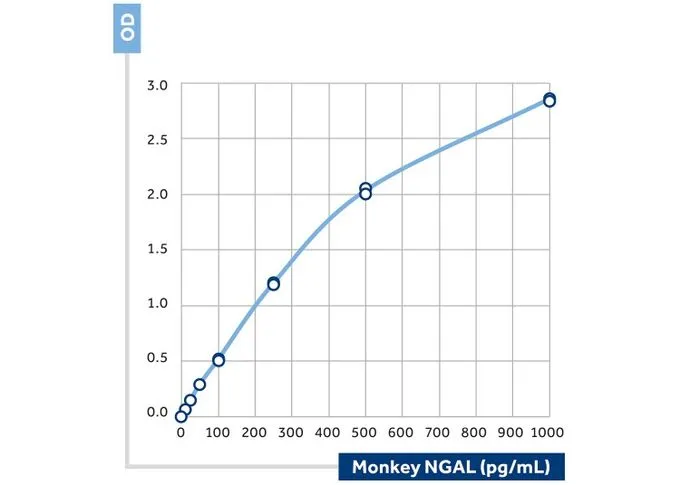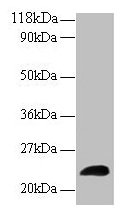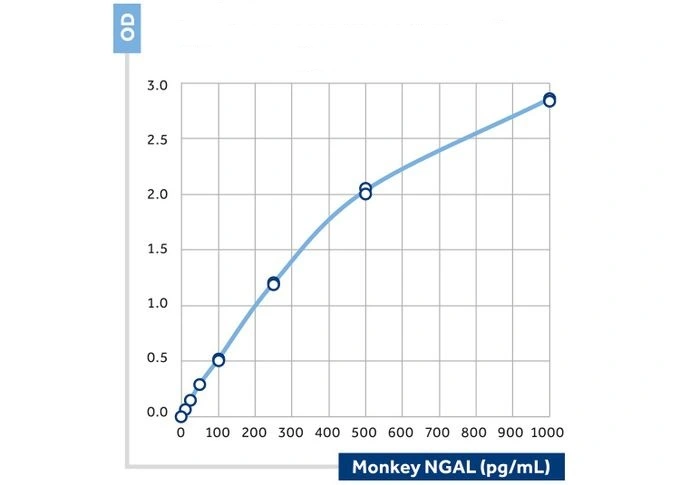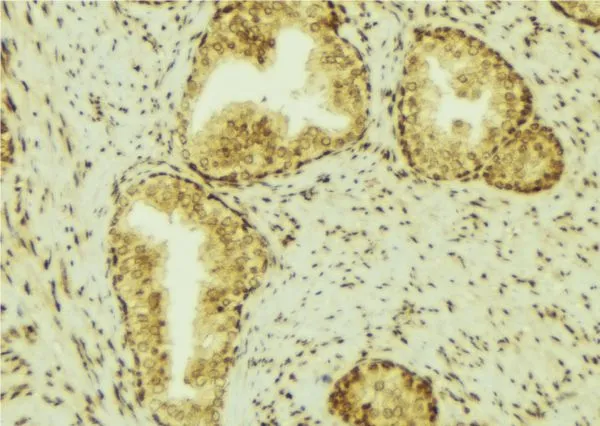
The calibration curve of a sandwich assay for Monkey NGAL using GTX60968 as the capture antibody and GTX60987-02 as the biotinylated detection antibody.
Lipocalin-2 antibody [68] (Biotin)
GTX60987-02
ApplicationsELISA
Product group Antibodies
TargetLCN2
Overview
- SupplierGeneTex
- Product NameLipocalin-2 antibody [68] (Biotin)
- Delivery Days Customer9
- ApplicationsELISA
- CertificationResearch Use Only
- ClonalityMonoclonal
- Clone ID68
- ConjugateBiotin
- Gene ID3934
- Target nameLCN2
- Target descriptionlipocalin 2
- Target synonyms24p3, MSFI, NGAL, p25, neutrophil gelatinase-associated lipocalin, 25 kDa alpha-2-microglobulin-related subunit of MMP-9, migration-stimulating factor inhibitor, oncogene 24p3, siderocalin LCN2
- HostMouse
- IsotypeIgG1
- Protein IDP80188
- Protein NameNeutrophil gelatinase-associated lipocalin
- Scientific DescriptionThis gene encodes a protein that belongs to the lipocalin family. Members of this family transport small hydrophobic molecules such as lipids, steroid hormones and retinoids. The protein encoded by this gene is a neutrophil gelatinase-associated lipocalin and plays a role in innate immunity by limiting bacterial growth as a result of sequestering iron-containing siderophores. The presence of this protein in blood and urine is an early biomarker of acute kidney injury. This protein is thought to be be involved in multiple cellular processes, including maintenance of skin homeostasis, and suppression of invasiveness and metastasis. Mice lacking this gene are more susceptible to bacterial infection than wild type mice. [provided by RefSeq, Sep 2015]
- Storage Instruction2°C to 8°C
- UNSPSC12352203


![Sandwich ELISA analysis of Human Lipocalin-2 Protein (GTX17616-pro) using GTX17618 Lipocalin-2 antibody [33] as coating antibody and GTX17617 Lipocalin-2 antibody [14] (Biotin) as detecting antibody.](https://www.genetex.com/upload/website/prouct_img/normal/GTX17617/GTX17617_ELISA_20181120_w_23060620_804.webp)
![Sandwich ELISA analysis of Human Lipocalin-2 Protein (GTX17616-pro) using GTX17618 Lipocalin-2 antibody [33] as coating antibody and GTX17617 Lipocalin-2 antibody [14] (Biotin) as detecting antibody.](https://www.genetex.com/upload/website/prouct_img/normal/GTX17618/GTX17618_ELISA_20181120_w_23060620_826.webp)

